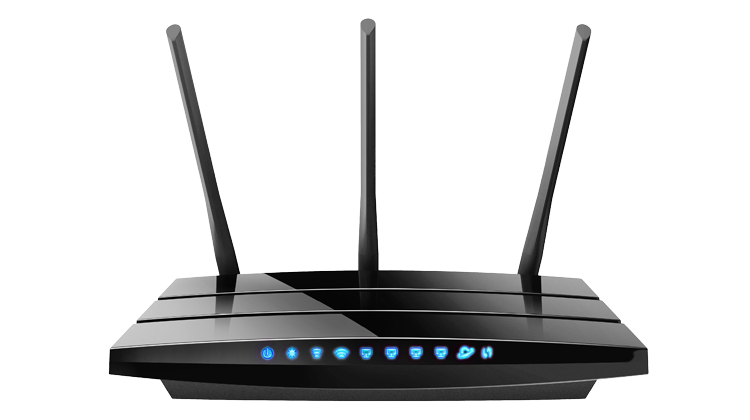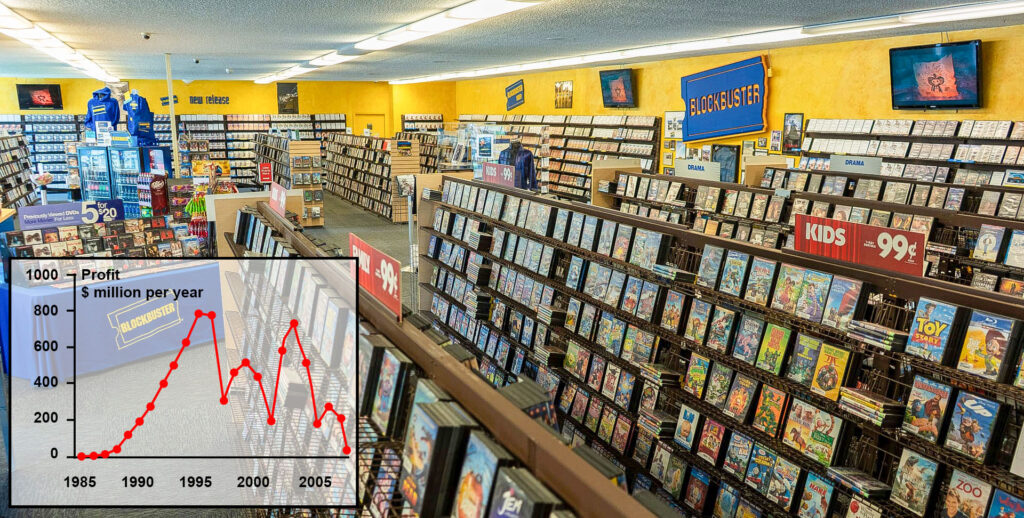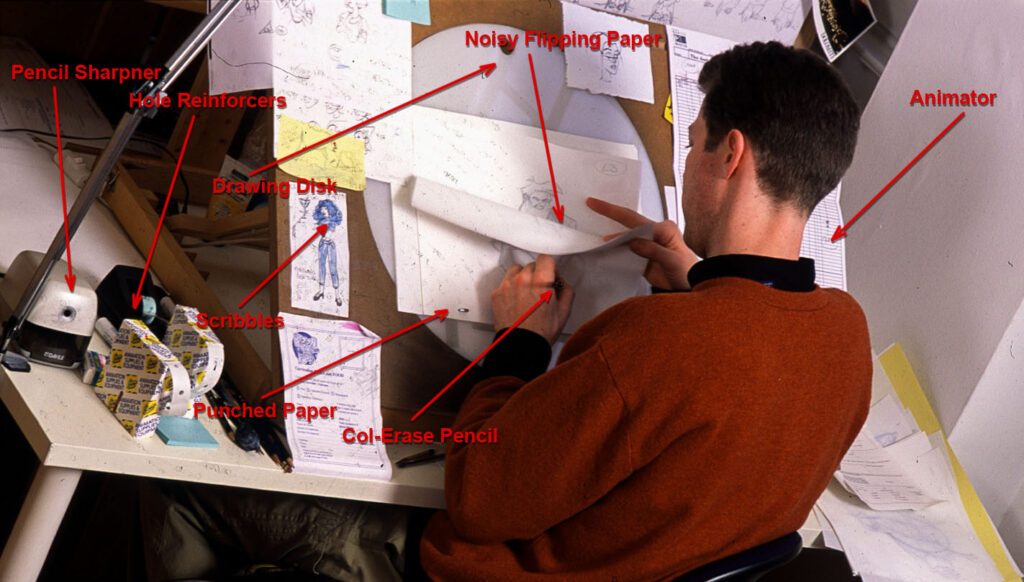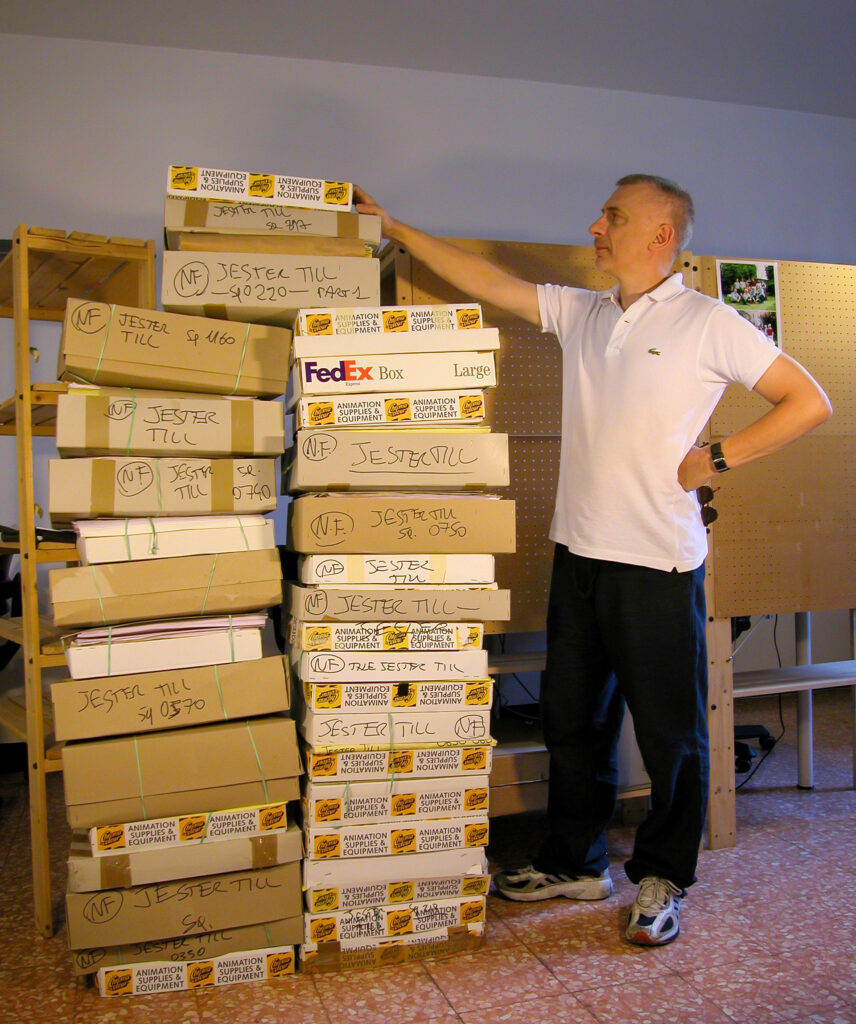
In the previous article I summarized what was up now the most important cultural – and technical – revolution in which I had the opportunity to witness, and actively participate firsthand.
The great “classic” animated feature films, those that has accompanied us since childhood and which later, already working in the field, so fascinated us, those unforgettable masterpieces such as Lion King, Tarzan, The Prince of Egypt, Spirit, had been declared dead, and had been replaced in a few years by other products, some of them undoubtedly of great impact, which established a truly new frontier for animation, and which certainly did not fail to excite us, constituting for all of us a final and most demanding challenge for our skills and creativity.
In the meantime, however, a third “revolution” had already begun, this one truly epochal, something that modified for the first time in such a radical way the production downstream of the chain, i.e. on the part of the public, and no longer only upstream, on the part of the industry as had happened until then.
It was an initially underestimated revolution, which little seemed to involve our particular world, which was engaged in other challenges and more structural changes, focused mostly at the production of new images, ideas, contents capable of satisfying an increasingly restless audience, always eager for new, always “never seen” stuff.
Anyway, everything started relatively slowly and gradually, somehow under the radar, because the innovation, in order to really involve a significant part of the interested industry and its audience, needed large superstructures (ADSL, VDSL, Fiber Optic nets), which in turn required targeted and large-scale political and economic decisions, both nationally and internationally.

The real turning point began when technology made available on one hand truly widespread broadband/ultra-broadband connections, and on the other affordable devices compatible with bulk video material at adequate (i.e. high) resolution.
This set in motion a whole chain of effects that caused very profound and definitive changes in every sector of our industry in particular.
All this is actually also still in progress, something which we are all experiencing here and now, the ultimate outcomes of which are still difficult to predict, but I would like to point out here some of the effects that seem to me to be the most obvious and relevant for our discussion.

I can say that the massive transition from theaters and traditional broadcast TV to home streaming, with film packages available at any time of the day, which can be viewed on a whole range of different devices (from 70″ 4K smart TVs, to laptops, to tablets, and smartphones), with ways of enjoyment that are always different from each other and constantly changing, has led to a progressive crisis of the traditional cinema, and to an equally progressive shift of mainstream production from Theatrical Feature Film towards stream TV Series.
Furthermore and consequently, the latter have become increasingly competitive with the traditional 90-180 minutes film and its narrative models, both from a quantitative and, even more important, a qualitative point of view.
This trend has affected both live action production and, and probably to a greater and more dramatic extent, animation production: I mean, even more massively than in live action, mainstream animated production has shifted to TV series.
I believe that apart from a few majors – perhaps not even those – no traditional production company could sustain itself solely on animated feature films, while the ever-increasing demand (even if now we are starting to feel a slowdown) for new seasons of TV series pushed a large number of production houses, old and new, to rush to occupy this market.
While in the past the “TV series” production was a bit like the Cinderella of the world of animation (with the exception of a few of extremely successful and long-lasting American TV series, which we all know well), where Western companies relied mostly on the large Eastern – Korean, Taiwanese and Chinese – “factories” to produce huge quantities of footage of mediocre quality, if not frankly low or bad, now the TV Series – as has also happened in Live Action – has become the “backbone” of world production. Increasing not only in quantity but, as I said, in quality.
…And bringing “traditional” 2D back into the limelight, surprisingly, as a side effect.
Te latter was really a very interesting effect, as far as we were concerned, because while 3D production was starting to be a little too expensive for TV series, or even too cheap looking compared to what the public was now used to see, and therefore not particularly suited to supporting seasons of dozens of episodes lasting tens of minutes or more each, spanning entire years of broadcast, well, the “old fashioned” 2D could still boast greater flexibility, full creative freshness, and the possibility of creating very simple and stylized worlds, strong characters and original stories, at lower costs, however still capable of striking and engaging the emotion and imagination of its audience, especially children; an audience that is now fully independent in its choices, offered not only on TV screens, as we have seen, but on a wide range of mobile devices that the market makes available to anyone, regardless of his age.
I would also add that for 2D animation, the loss of visual quality on the tiny screen of a smartphone is often much less relevant than the liveliness of the images, the brilliance of the stories, the fantasy of the imagery typical of the “old” 2D technique, appropriately updated.
Paper-less, Pencil-less


This small but great “intermediate” revolution as mentioned in the title above, was made possible precisely by the lightning technological evolution with which we have dealt so far, and has directly resulted for us in effects that are much more significant than those that anyone else (not directly involved in the work of an animator or other animation artist) could ever imagine.
The increasingly widespread and pervasive diffusion of paperless systems was made possible, as I was saying, by the spread of interactive graphics tablets and processing systems such as TVPaint and, above all, Harmony, which recently has become somewhat one of the touchstones for the entire sector.
This change has led to a series of substantial consequences on our work, some of them not at all positive.
Of course, just to begin with this, many of us, after years of working and drudging with paper and pencils, have had to struggle quite a bit in the transition, to find a feeling with the stiff and slippery surface of the tablet, and a handling feedback that is very different from that of the pencil tip dragging on the paper sheet: a real physical rehabilitation path that caused me, for example, considerable back pain for several months, due to the contracted posture and the completely different control required by the digital pen. But it was an inevitable process, and now the Cintiq dominate pompously my work desk in place of the old – much loved and much hated – wooden lightbox and its heavy white plexiglass drawing disc – which moreover had to be handled very carefully, because it had the bad habit of falling painfully on your lap. I still keep somewhere more than one of more than one of these devilish boxes, all closed for years in their black bags, complete with their shiny chromed steel pegbars.
However, I must say that I would never be able to go back: there are so many objective advantages that this technology offers us, and working by noisily endlessly flipping punched paper now seems so ancient and outdated to me.

All these innovations, in some ways so powerful and full of new exciting opportunities for everyone, including control, precision, speed, and free creativity, have however also led us to what is the actual and hard panorama of animation industry (at least in dominant TV series production): an overall sight which is neither nice nor exciting at all.
Enormously tightened timescales, quality requirements completely disproportionate to the actual working conditions, wild limitless and often meaningless retakes, compressed, often unsustainable wages, very harsh recruitment selection calls, indiscriminate use of entry “tests” (even for senior professionals with decades of experience), great frequency and ease of being fired, and so on.
All this brutally brings us back to the main, big underlying question: why did we get into this madness? Why do we continue to work and fight to endlessly improve our performance, while everything, at least in this particular industry, seems to push us towards a completely industrialized production? While the individual artistic contribution seems to be now reduced to a pure, almost automated, repetitive execution?
Are we still artists, or are we just workers?
And if we are workers, is our individual contribution still significant and unique, or is it now purely numerical and replaceable? Or, in Marxist terms, alienated (entfremdet)?
We must understand these essential points, because a new, unexpected and unpredictable revolution is about to break out, which is about to upset the entire panorama of our industry from the foundations, and only knowing where our foundations are rooted maybe we will be able to survive.
That’s what I’ll try to explore with you in the next articles, coming soon:
The Fourth Revolution: “AW! Artificial Who?”
